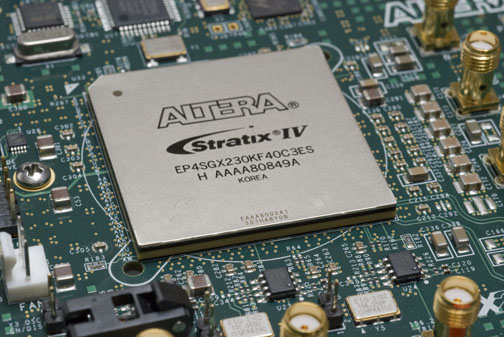Mastering FPGA Programming: A Comprehensive Guide

Introduction: Field Programmable Gate Arrays (FPGAs) have become increasingly popular in the realm of digital design due to their flexibility, reconfigurability, and high-performance capabilities. Programming FPGAs allows engineers and developers to implement custom logic circuits, accelerators, and digital signal processing algorithms tailored to specific applications. In this comprehensive guide, we will delve into the fundamentals, methodologies, and advanced techniques for programming FPGA devices, covering everything from basic concepts to real-world applications.
Section 1: Understanding FPGA Technology
1.1 Overview of FPGAs: FPGAs are semiconductor devices that contain a large number of configurable logic blocks, interconnects, and memory elements interconnected via programmable routing resources. Unlike Application-Specific Integrated Circuits (ASICs), FPGAs can be programmed and reprogrammed to implement custom logic functions, making them ideal for prototyping, rapid development, and low-volume production.
1.2 Key Components of FPGAs: FPGAs consist of several key components, including:
- Configurable Logic Blocks (CLBs): Basic building blocks containing lookup tables (LUTs), flip-flops, multiplexers, and other logic elements.
- Programmable Interconnect: Routing resources that connect CLBs, memory blocks, and I/O pins to implement desired logic functions.
- Block RAM and DSP Blocks: On-chip memory blocks and digital signal processing blocks for storing data and performing complex arithmetic operations.
- Input/Output (I/O) Ports: Interface ports for connecting external devices, sensors, and peripherals to the FPGA.
1.3 Advantages of FPGA Programming: Programming FPGAs offers several advantages, including:
- Flexibility: FPGAs can be reconfigured on-the-fly to adapt to changing requirements, making them suitable for a wide range of applications.
- High Performance: FPGAs can achieve high-speed operation and low-latency processing due to their parallel architecture and hardware acceleration capabilities.
- Prototyping: FPGAs enable rapid prototyping and iterative design, allowing engineers to validate concepts and test algorithms before implementation in ASICs or custom hardware.
Section 2: FPGA Programming Basics
2.1 Hardware Description Languages (HDLs): FPGA programming is typically done using Hardware Description Languages (HDLs) such as Verilog and VHDL. HDLs allow engineers to describe the behavior and structure of digital circuits using text-based syntax, enabling simulation, synthesis, and implementation of FPGA designs.
2.2 Design Entry Methods: Engineers can enter FPGA designs using various methods, including:
- Schematic Entry: Drawing circuits graphically using schematic capture tools provided by FPGA design software.
- Textual Entry: Writing HDL code manually using text editors or integrated development environments (IDEs).
- High-Level Synthesis (HLS): Converting high-level programming languages such as C/C++ into hardware descriptions automatically using HLS tools.
2.3 Simulation and Verification: Before programming the FPGA, engineers simulate and verify the design using simulation tools to ensure correctness, functionality, and performance. Simulation allows engineers to test the behavior of the design under different conditions and stimuli, identify bugs, and debug the code before synthesis and implementation.
Section 3: FPGA Programming Methodologies
3.1 RTL Design: Register-Transfer Level (RTL) design is the most common methodology for FPGA programming. Engineers describe the behavior and structure of digital circuits using RTL constructs such as flip-flops, registers, combinatorial logic, and control signals in HDLs like Verilog or VHDL.
3.2 Sequential and Combinatorial Logic: FPGA designs typically consist of a combination of sequential and combinatorial logic elements. Engineers use flip-flops and registers to store state information and implement sequential logic, while combinational logic elements such as logic gates, multiplexers, and arithmetic units perform data processing and manipulation.
3.3 Finite State Machines (FSMs): Finite State Machines (FSMs) are widely used in FPGA designs to control system behavior and implement state-based logic. Engineers describe FSMs using HDL constructs such as state registers, state transition logic, and state encoding techniques to model sequential processes and control system operation.
Section 4: Advanced FPGA Programming Techniques
4.1 Pipelining and Parallelism: Pipelining and parallelism techniques are employed to improve the performance and throughput of FPGA designs. Engineers partition computations into stages, pipeline data flow between stages, and exploit parallelism by replicating hardware resources to achieve faster processing and reduced latency.
4.2 Memory Interfaces and DMA: FPGAs often require interfacing with external memory devices such as DDR SDRAM, Flash memory, or SRAM to store and retrieve data efficiently. Engineers implement memory interfaces, controllers, and Direct Memory Access (DMA) engines to manage data transfers between FPGA logic and external memory.
4.3 Hardware Acceleration and Co-Processing: FPGAs are well-suited for hardware acceleration and co-processing tasks, such as digital signal processing, image processing, encryption, and neural network inference. Engineers develop custom hardware accelerators, coprocessors, and specialized processing units to offload compute-intensive tasks from the CPU and improve overall system performance.
Section 5: FPGA Development Tools and Platforms
5.1 Vendor-Specific Development Tools: FPGA vendors provide comprehensive development tools and software suites tailored to their hardware platforms. Examples include Xilinx Vivado, Intel Quartus Prime, and Lattice Diamond, which offer synthesis, place-and-route, and debugging capabilities for FPGA development.
5.2 Open-Source Tools and Frameworks: Open-source tools and frameworks such as Icestorm, Yosys, and Project IceStorm provide alternatives to vendor-specific FPGA development tools. These tools offer synthesis, place-and-route, and programming support for a variety of FPGA platforms, including low-cost and open-source FPGA boards.
5.3 Hardware Development Kits (HDKs): Hardware Development Kits (HDKs) provide a hardware platform for FPGA development, including FPGA boards, peripheral interfaces, and development accessories. HDKs from vendors such as Xilinx, Intel, and Digilent offer a range of features and capabilities suitable for prototyping, testing, and deploying FPGA-based solutions.
Conclusion: Programming FPGAs is a versatile and powerful approach to implementing custom digital logic, accelerators, and processing systems for a wide range of applications. By mastering the fundamentals, methodologies, and advanced techniques discussed in this guide, engineers and developers can leverage FPGAs to create high-performance, reconfigurable systems tailored to specific requirements. With its flexibility, performance, and scalability, FPGA programming opens up new possibilities for innovation and optimization in digital design and hardware development.




